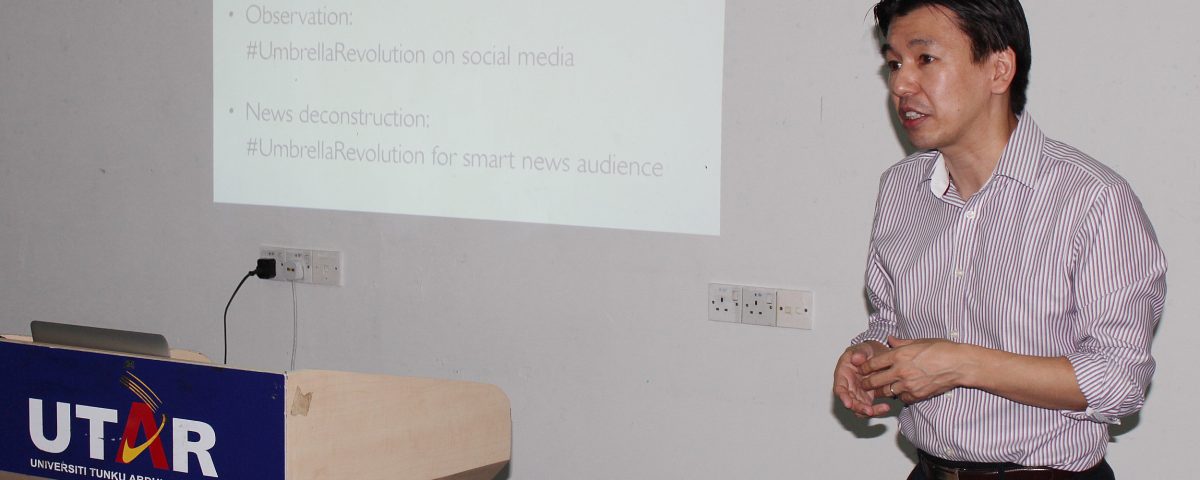
AAJA-Asia Uplink: Lessons from the field
20 November 2014
JMSC lecturer Barry Kalb retires from a decade of “tough-love” teaching
26 November 2014News literacy workshops illustrate healthy skepticism about Internet “news”

Can you tell whether the news you read on Facebook or Twitter is fact or fiction?
That’s the question JMSC Assistant Professor Masato Kajimoto has been asking journalists and educators across the Asia-Pacific, as he embarks upon workshops and research that explore “news literacy” in the region.
Kajimoto has been using media coverage of the recent Hong Kong pro-democracy protests as an example of how news literacy methods can be applied to help determine which items sent over the Internet are fact, and which are fiction.
The workshops are part of a JMSC initiative to develop education tools for teaching news literacy in the Asia Pacific media landscape. Kajimoto is now working with media and journalism educators across the region to expand the programme. He made presentations in November at the Universiti Tunku Abdul Rahman in Kuala Lumpur, Malaysia, and FPT University in Hanoi, Vietnam.
“There are so many news items you get on social media, but it’s really hard to tell which one is authentic, fact-based news, and which are politically motivated messages people are trying to distribute,” Kajimoto said.
“When stories are developing and the situation is evolving all the time, even trusted news media make mistakes. So just because something comes from the BBC, it doesn’t mean it’s trustworthy. We still have to apply the same critical thinking skills to evaluate each piece of information.”
During the workshops, Kajimoto used international news coverage from the Hong Kong protests to demonstrate how the number and types of sources of information a journalist quotes in a story can be indications of its accuracy, and how online tools can be used to tell whether a photo has been doctored or used out of context.

About 50 educators, journalists and students attended the workshop in Hanoi. (Photo from FPT University)
For the demonstration, he showed how Asia Sentinel, a Hong Kong news website, had investigated the source behind “secret meetings” that mainstream Chinese and some Hong Kong media had quoted as “proof” that the United States was supporting the protesters.
According to the investigation, this ‘source’ was a pseudonym for someone with no credibility to provide such information. The ‘think tanks’ that were quoted were similarly discredited by the Asia Sentinel investigation.
Kajimoto said news audiences should be as discerning as the Asia Sentinel’s journalist, because such reports often spread unconfirmed rumours that are shared very quickly on social media, and can lead a previously peaceful demonstration to turn dangerous.
“When a story is developing, it’s really hard for traditional news organisations to keep up,” he said. “By the time they verify things, most of the news audience has already moved on, so you end up with so many rumours and unfounded information going around, and people believe in them, and sometimes take action.”
He said the programme is also reaching out to secondary schools in Hong Kong and various Asian countries to see if they can adopt some of the news literacy curriculum in their teaching, “because we believe that media literacy skills should be taught early on, the earlier the better.”
[The news literacy curriculum was originally developed by Stony Brook University. Its Center for News Literacy and JMSC’s Asia Pacific Digital Citizens Project have been collaborating to expand the program in Asia.]
